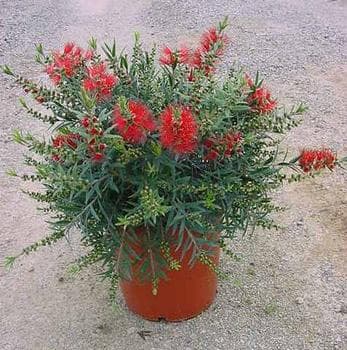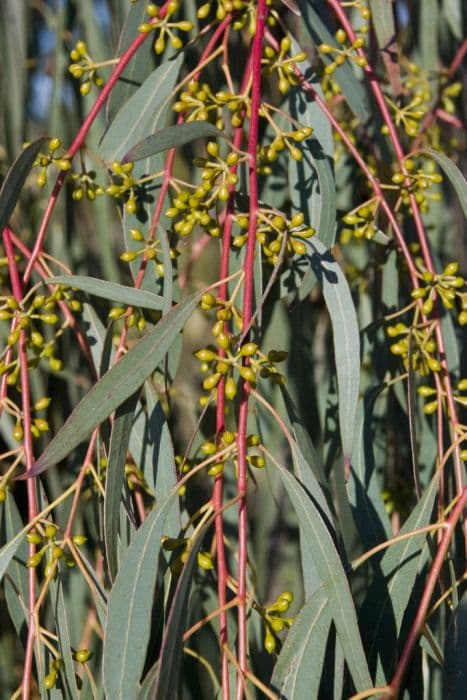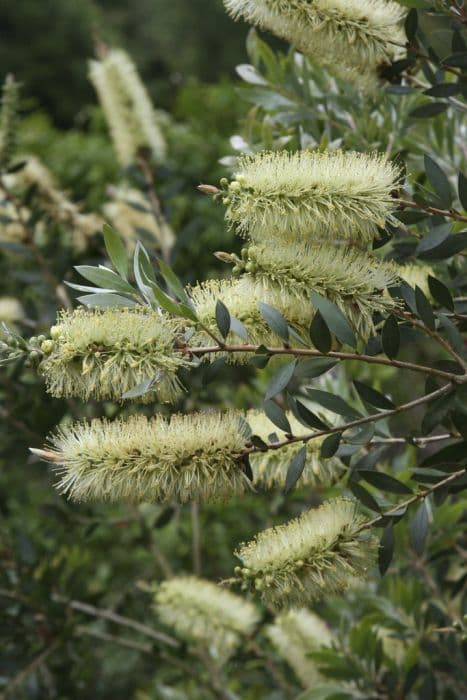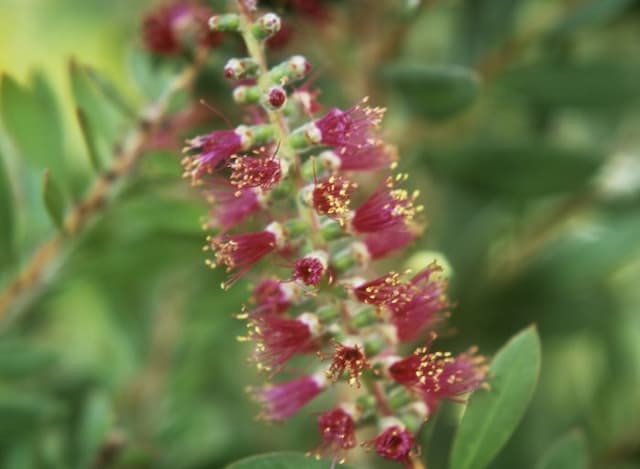Temu 'Glanleam Gold' Luma apiculata 'Glanleam Gold' (v)
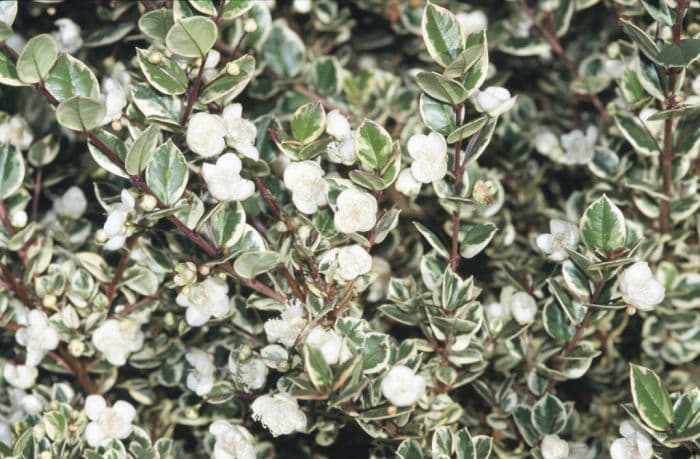
ABOUT
'Glanleam Gold' is an evergreen shrub to 3m, with attractively peeling, cinnamon-coloured bark and neat, cream-margined elliptic leaves, tinged pink when young. Small white flowers in late summer and autumn
About this plant
 Names
NamesFamily
Myrtaceae
Synonyms
Chilean Myrtle, Temu, Arrayan, Glanleam Gold Luma, Golden Chilean Myrtle
Common names
Luma apiculata 'Glanleam Gold' (v).
 Characteristics
CharacteristicsLife cycle
Perennials
Foliage type
Evergreen
Color of leaves
Variegated
Flower color
White
Height
6 feet [1.8 meters]
Spread
5 feet [1.5 meters]
Plant type
Shrub
Hardiness zones
8
Native area
Chile Argentina
Benefits
 General Benefits
General Benefits- Ornamental Value: The Luma apiculata 'Glanleam Gold', also known as 'Glanleam Gold' Chilean myrtle, has a striking appearance with its variegated gold and green foliage, making it a visually appealing addition to gardens.
- Habitat Support: It offers habitat and food for wildlife, including birds and beneficial insects, fostering a biodiverse environment.
- Year-Round Interest: With its evergreen leaves, the plant provides color and structure throughout all seasons, especially in winter when other plants may be dormant.
- Drought Tolerance: Once established, it is relatively drought-resistant, making it suitable for regions with less rainfall or for gardeners seeking low-water-use landscaping.
- Low Maintenance: It requires minimal care after it has settled in, which is ideal for people looking for an attractive garden without the hassle of intensive upkeep.
- Privacy Screen: It can be used to create a natural and attractive screen or hedge, offering privacy for homes and gardens.
- Versatility: It adapts well to various soil types and can be grown in a range of conditions from coastal to inland climates, providing great versatility in landscaping.
- Wind Resistance: The plant is resistant to wind, which makes it suitable for exposed sites or coastal areas where wind can be a problem for less sturdy plants.
 Medical Properties
Medical PropertiesThis plant is not used for medical purposes.
 Air-purifying Qualities
Air-purifying QualitiesThis plant is not specifically known for air purifying qualities.
 Other Uses
Other Uses- As a natural dye: The leaves and bark of the Luma apiculata 'Glanleam Gold', commonly known as 'Chilean myrtle', can be used to produce natural dyes for textiles, with varying shades depending on the mordant used.
- In crafting: The wood of Chilean myrtle is dense and can be used for detailed and decorative woodworking projects, such as inlays and fine furniture.
- In bonsai: With its small leaves and attractive bark, Chilean myrtle can be trained as a bonsai specimen, providing an unusual choice for enthusiasts of the art.
- For essential oils: While not commonly known for this use, the aromatic leaves of Chilean myrtle can potentially be distilled to produce essential oils for use in homemade perfumes and scents.
- As ornamental topiary: The dense foliage and growth habit of Chilean myrtle make it suitable for shaping into ornamental topiaries in formal gardens.
- In culinary arts: The berries of Luma apiculata 'Glanleam Gold' are edible and can be used to make jams or jellies, although this use is less common than with other fruit-bearing plants.
- As a windbreak: This plant can be grown in rows to form a windbreak to protect more sensitive plants in the garden, thanks to its robust nature and evergreen foliage.
- For educational purposes: It can be used in schools or educational programs to teach about plant biodiversity and conservation, especially considering its origin from South America.
- In habitat restoration: Chilean myrtle can be included in native or near-native plantings and landscape restoration projects to help re-establish local flora and support wildlife.
- As a natural insect repellant: The aromatic leaves may have some properties that repel certain insects, which could be useful when planted in close proximity to outdoor living spaces.
Interesting Facts
 Feng Shui
Feng ShuiThe Chilean myrtle is not used in Feng Shui practice.
 Zodiac Sign Compitability
Zodiac Sign CompitabilityThe Chilean myrtle is not used in astrology practice.
 Plant Symbolism
Plant Symbolism- Resilience - Luma apiculata 'Glanleam Gold', commonly known as the Chilean myrtle, is known for its resilience as it can adapt to various soil types, showing its capacity to thrive in different environments.
- Purity - The pure white flowers of the Chilean myrtle represent innocence and purity, often used in ceremonies to signify new beginnings.
- Transformation - As the foliage of the Chilean myrtle changes color through the seasons, it is seen as a symbol of transformation and change, embracing new phases of life.
- Everlasting - The evergreen nature of the Chilean myrtle signifies permanence and eternity, making it a symbol of enduring love or memory.
- Beauty - With its attractive, variegated golden leaves, the Chilean myrtle represents beauty and appreciation for the aesthetic, often used to enhance the beauty of gardens.
 Water
WaterThe Chilean myrtle should be watered deeply and the soil allowed to dry out slightly between waterings. Water it approximately once a week, adjusting for climatic conditions; more frequently during hot, dry periods, and less during cooler, moist periods. Typically, give the plant about 1 to 1.5 gallons of water at each watering for an average-sized shrub. It is important not to overwater, as the Chilean myrtle does not like to sit in wet soil, which can lead to root rot.
 Light
LightThe Chilean myrtle thrives in full sunlight to partial shade. The best spot for this plant is a location where it receives at least 6 hours of direct sunlight daily, though it can tolerate some shade. Avoid deep shade positions since insufficient light can reduce the vibrancy of its foliage and overall health.
 Temperature
TemperatureThe Chilean myrtle prefers temperate climates and can tolerate a temperature range from about 20°F to 80°F. However, it thrives in conditions that are consistently between 50°F and 70°F. It can survive brief periods of colder weather but should be protected from prolonged exposure to temperatures below 20°F.
 Pruning
PruningThe Chilean myrtle should be pruned to maintain its shape and to remove any dead or diseased branches. Prune in late winter or early spring before new growth starts. Light pruning can be done annually, while more significant shaping should be done every few years. Timely pruning helps encourage bushier growth and maintains the ornamental appeal of the plant.
 Cleaning
CleaningAs needed
 Soil
SoilThe Chilean myrtle ‘Glanleam Gold’ requires well-draining soil with a mixture of loam, sand, and peat to mimic its native conditions. The ideal soil pH for this plant is slightly acidic to neutral, ranging from 5.5 to 7.0.
 Repotting
RepottingThe Chilean myrtle ‘Glanleam Gold’ should be repotted every 2-3 years to ensure it has enough room for root growth and to replace nutrient-depleted soil.
 Humidity & Misting
Humidity & MistingThe Chilean myrtle ‘Glanleam Gold’ prefers moderate humidity levels but is adaptable to various humidity conditions as long as it is not too dry.
 Suitable locations
Suitable locationsIndoor
Place in bright, indirect light and protect from drafts.
Outdoor
Plant in a sheltered spot with morning sun and well-drained soil.
Hardiness zone
8-11 USDA
 Life cycle
Life cycleLuma apiculata 'Glanleam Gold', more commonly known as Chilean myrtle or 'Glanleam Gold', begins its life cycle as a seed which, upon germination, produces a small root system and a shoot that develops into a seedling. With adequate light, water, and soil nutrients, the seedling grows into a young plant with a more extensive root system and a woody stem. As it matures, the plant develops evergreen leaves that are variegated yellow and green, and it reaches its juvenile phase. During this phase, the Chilean myrtle invests energy into vertical and horizontal growth, expanding its branch and leaf structure. It eventually reaches reproductive maturity, flowering in the summer with small, white, fragrant blossoms that attract pollinators. After pollination, the plant produces small purple-black berries, which are distributed by birds and other wildlife, completing the life cycle as the seeds are spread to new locations.
 Propogation
PropogationPropogation time
Spring-Early Summer
The most popular method for propagating the Chilean myrtle 'Glanleam Gold', a variegated form of Luma apiculata, is through semi-hardwood cuttings. This process typically occurs during the summer months when growth is vigorous. Shoots that have started to mature but are not yet fully hardened are selected. Cuttings of about 4 to 6 inches (10 to 15 centimeters) are taken, with the lower leaves removed and the base dipped in a rooting hormone to encourage root development. These cuttings are then placed in a well-draining rooting medium and kept under high humidity and indirect light until roots have established, which usually takes a few weeks to a couple of months.
